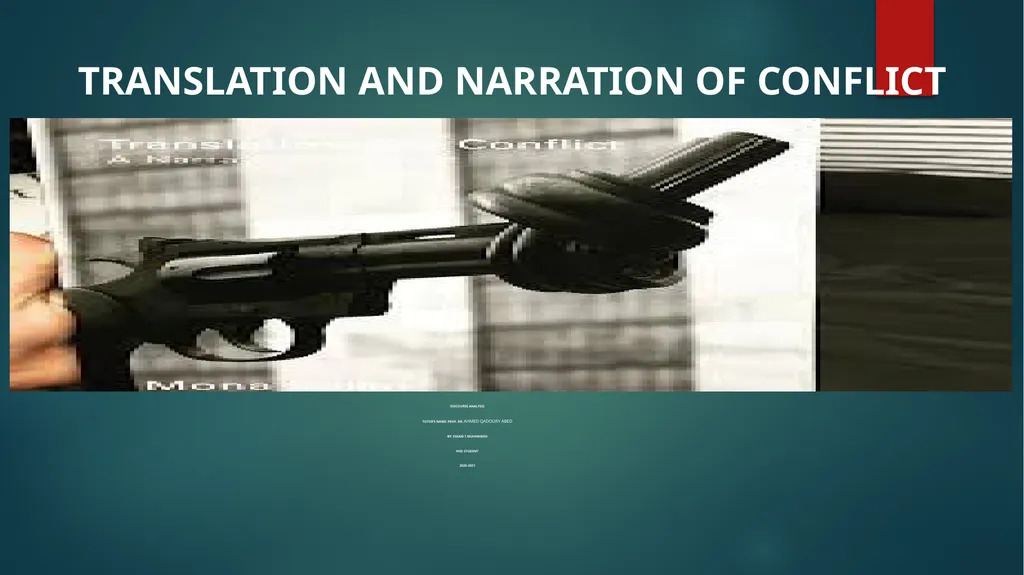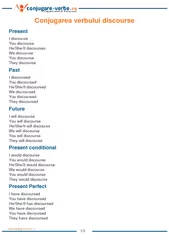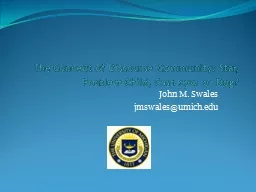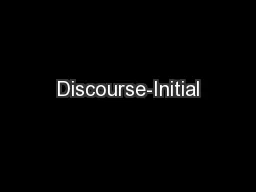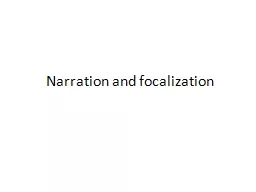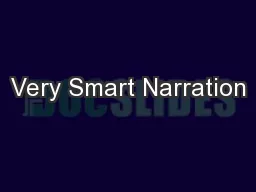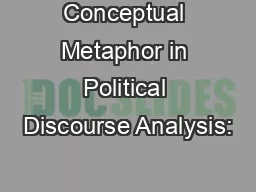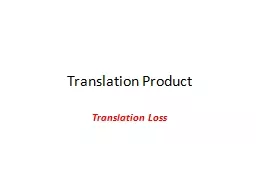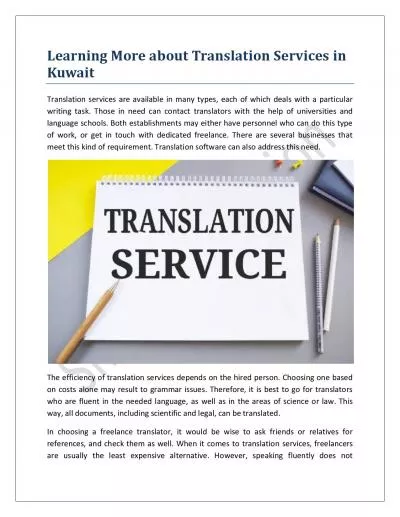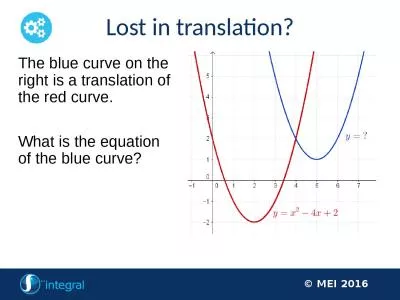TRANSLATION AND NARRATION OF CONFLICT Discourse
Author : natalia-silvester | Published Date : 2025-08-04
Description: TRANSLATION AND NARRATION OF CONFLICT Discourse Analysis Tutors Name Prof Dr AHMED QADOURY ABED By Essam TMuhammed PhD Student 20202021 Outline Introduction Narrative Approach Narrative Typology Model Narrative Discourse and Myth
Presentation Embed Code
Download Presentation
Download
Presentation The PPT/PDF document
"TRANSLATION AND NARRATION OF CONFLICT Discourse" is the property of its rightful owner.
Permission is granted to download and print the materials on this website for personal, non-commercial use only,
and to display it on your personal computer provided you do not modify the materials and that you retain all
copyright notices contained in the materials. By downloading content from our website, you accept the terms of
this agreement.
Transcript:TRANSLATION AND NARRATION OF CONFLICT Discourse:
TRANSLATION AND NARRATION OF CONFLICT Discourse Analysis Tutor’s Name: Prof. Dr. AHMED QADOURY ABED By: Essam T.Muhammed PhD Student 2020-2021 Outline Introduction Narrative Approach Narrative Typology Model Narrative, Discourse, and Myth Features of Narrativity Is Narrative a Separate Genre or Not? Framing Narrative in Translation Narratively &Normalizing Narrative and Truth The Notion of Constructedness Historical Intertextual Narratives Narratives Cross Linguistic Borders A Narrative Typology Model Features of Narrativity Framing Narratives in Translation Conclusion References Introduction Alongside ideology and media, conflict constitutes the third side of this triangle of political discourse-related concepts. Whatever roles people occupy in life and whatever activities they participate in, they remain part of a conflictive environment. They contribute to shaping this environment while it influences them accordingly. Today’s conflicts not only influence the geographical area in which the conflict occurs, they also transcend political and social boarders, exerting an instant impact on a larger regional or even global population. Therefore, translation, whose main function is to facilitate communication across linguistic boundaries, becomes substantially sought after by opponents and disputing parties to legitimise and promote their descriptions of the conflict while undermining the rival parties’ narratives . . A Narrative Approach Labov (1972: 359-60) defines ‘narrative’ as a way to summarize personal experience by using linguistic and verbal utterances, i.e. words and sentences, to describe events that indeed took place . Fisher (1987: 193) suggests that through narration, all forms of communication are interpreted, assessed, and judged. Unlike discourse production which expresses a “deliberate” decision made by the producer, narration, for Fisher (ibid), it is an act that reflects the background knowledge and experience of the narrator . According to Baker (2006: 19), narratives can be the stories that people narrate to themselves, as well as to others. They may touch people’s personal lives or tackle public issues, ultimately governing people’s actions and influencing their beliefs . Defining the concept of narrative Bennet and Edelman(1985: 159) affirm that narratives can significantly influence human behavior, way of thinking, morals, values, principles, and the way people perceive themselves and the surrounding world For Bruner( 1991: 5-6)The significance of narratives does not lie in the way they are structured but rather the way they function as tools for changing attitudes and constructing reality . Baker (2006: 3) points out that narratives refer to stories that are produced and circulated, often by ordinary people on a daily basis, and thus develop
